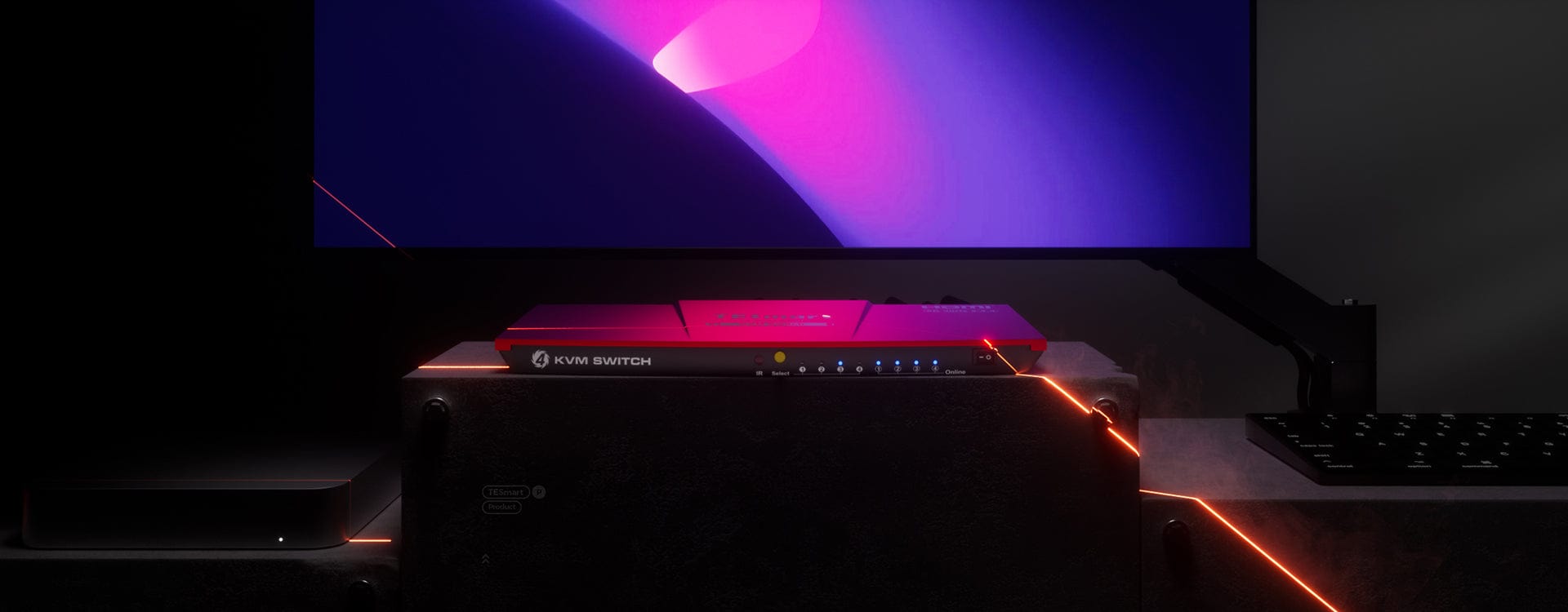Introduction to Synergy Software
Synergy is a powerful open-source software that allows for keyboard and mouse sharing between multiple computers. It supports seamless connectivity between different operating systems, including Windows, macOS, and Linux. With Synergy, users can control multiple computers using a single keyboard and mouse, enabling convenient multitasking operations.
Synergy works by sharing the keyboard and mouse input from the primary host to other client machines. Users simply need to connect multiple computers to the same local area network and configure the position and role of each computer in the Synergy software to achieve seamless switching and sharing of the keyboard and mouse. Synergy also supports clipboard sharing and file dragging functionality, providing a more convenient operating experience.
The advantages of Synergy lie in its cross-platform compatibility and flexibility. Users can freely switch between different operating systems without physically switching keyboards and mice. Additionally, Synergy offers secure encryption features to ensure the safety of data transmission. With Synergy, users can improve work efficiency, reduce the cost of using multiple keyboards and mice, and achieve a more convenient operation of multiple computers.

Introduction to KVM Switches
A KVM switch (Keyboard, Video, Mouse Switch) is a hardware device used to manage the keyboard, video, and mouse input of multiple computers. A KVM switch allows users to switch input devices between multiple computers, enabling remote management and control of multiple computers through a single physical device.
KVM switches typically include a switch button or hotkeys that allow users to switch the control target of the input devices. With a KVM switch, users can control multiple computers using a single keyboard, display, and mouse without the need for separate input devices for each computer.
The main difference between KVM switches and Synergy is that a KVM switch is a hardware device, while Synergy is software. The advantage of a KVM switch lies in its ability to achieve physical hardware switching without being limited by the operating system. It can be used with various operating systems and computer devices without requiring additional software installation on the computers.
Comparison of KVM Switches and Synergy
KVM switches and Synergy both enable keyboard and mouse sharing among multiple computers, but they differ in their working principles and usage.
- Synergy is software that needs to be installed on each computer and shares the keyboard and mouse over the network. It is suitable for sharing between different operating systems and provides rich features and customization options.
- A KVM switch is a hardware device that achieves switching between multiple computers through physical switching. Users can switch the control target of the input devices by pressing the switch button or using hotkeys. KVM switches are suitable for scenarios that require frequent switching between multiple computers without the need for additional software installation on the computers.
The choice between Synergy and KVM switches depends on the user's needs and the specific usage scenario. If the requirement is to flexibly share the keyboard and mouse between different operating systems and customization of features and options is desired, Synergy software can be chosen. If physical hardware switching is needed, compatibility with various operating systems and computer devices is required, and there is no need for additional software installation on the computers, a KVM switch can be selected.
Advantages of KVM Switches
KVM switches offer several advantages that make them an ideal tool for many users:
- Centralized management of multiple computers: KVM switches allow users to manage multiple computers using a single keyboard, display, and mouse. This simplifies the workspace and reduces the physical footprint of devices.
- Improved work efficiency: With a KVM switch, users can switch quickly between multiple computers, saving time and effort. There is no need for frequent switching of input devices, allowing users to focus more on their work tasks.
- Cross-platform compatibility: KVM switches are compatible with various operating systems and computer devices, including Windows, macOS, Linux, etc. Users can switch and operate between different platforms with ease.
- Hardware-level security: KVM switches achieve input device switching at the physical level, unaffected by software vulnerabilities and network attacks. This provides higher security and privacy protection for users.
- Simplified device management: With a KVM switch, users can centrally manage the keyboard and mouse input of multiple computers. There is no need for separate input devices for each computer, reducing device management and maintenance costs.

TESmart KVM Switch Recommendations:
For Dual-display Setups: HKS0202A2U - This KVM switch supports dual 4K60Hz displays, allowing efficient management of two computers and two displays with a single keyboard and mouse. It offers broad keyboard and mouse compatibility, suitable for wired, wireless, mechanical, and gaming keyboards. With multiple switching options including hotkeys, front panel buttons, and a remote control, it provides smooth and convenient operation. It is compatible with high resolutions and HDMI 2.0/HDCP 2.2, effortlessly handling signals such as 4K60Hz, 3440x1440@100Hz, and 2560x1440@144Hz. Complete PC connection cables are included, and it supports Windows, Mac, and Linux systems.




For Triple-display Setups: HKS0403A1U - This KVM switch features multiple USB 3.0 interfaces (including USB-C and charging functionality), LAN ports, and headphone jacks. It supports sharing among up to four computers and up to three displays, providing high-resolution (4K60Hz) output and extensive compatibility (3D, HDR, HDCP, Dolby Vision). It offers flexible operation with multiple switching options and auto-scan functionality. The one-key lock KVM function protects privacy. The user-friendly LCD visual display provides an intuitive operation experience.










